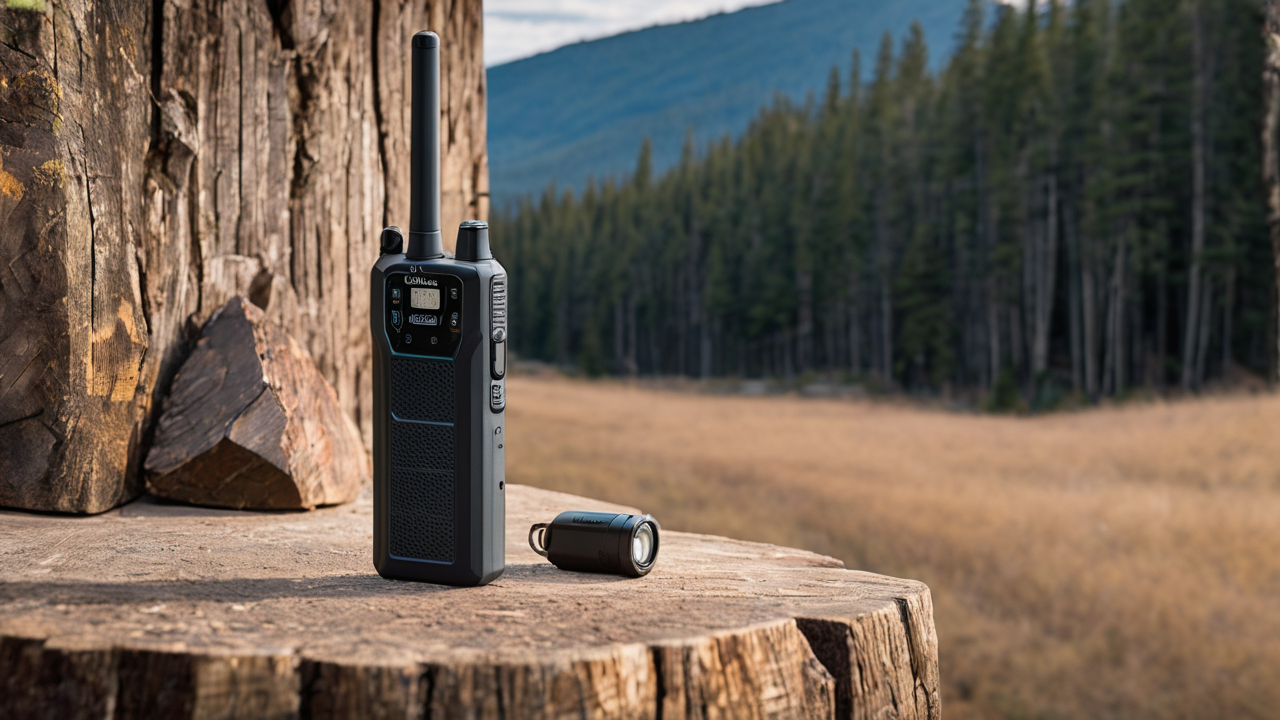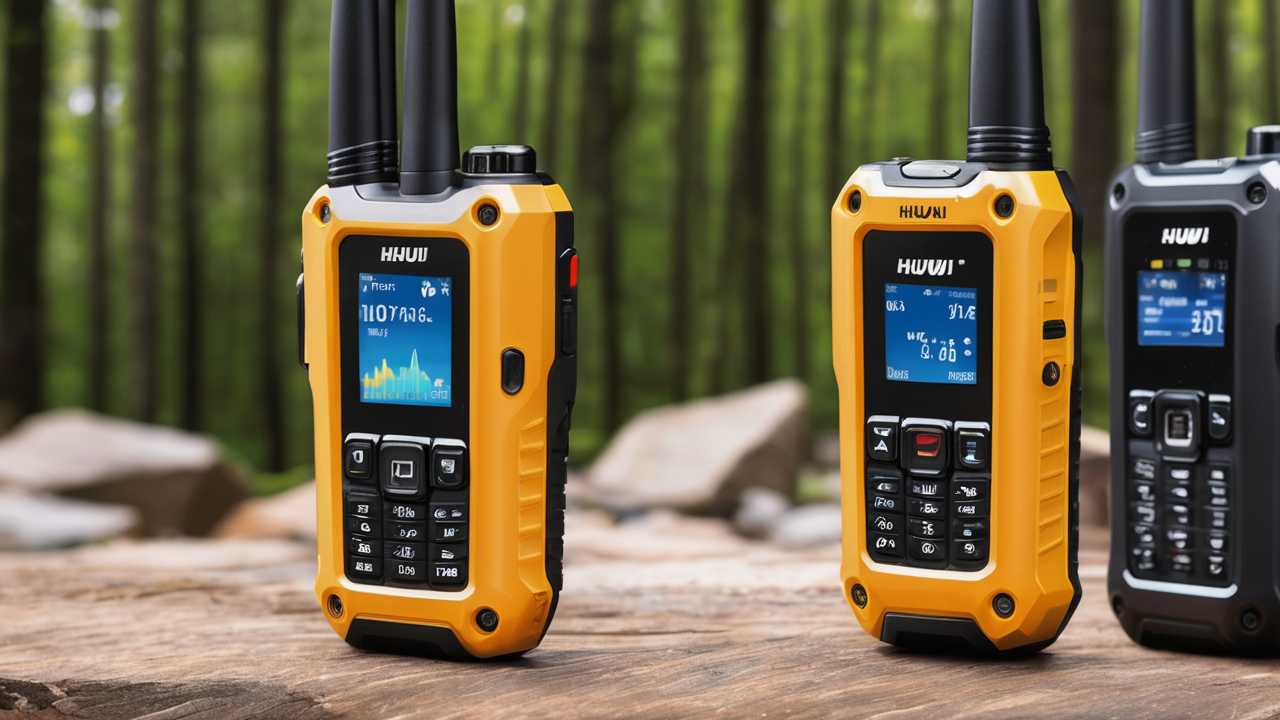Introduction to Walkie Talkies and Portable Communication
The Evolution of the Walkie Talkie
Walkie talkies have come a long way since their inception. They first appeared during World War II as bulky military devices. Over time, they've shrunk in size and grown in capability. Early models were heavy and had limited range. Today's walkie talkies are compact and can cover miles. They've also become more affordable and user-friendly.

Modern walkie talkies offer features like GPS tracking and weather alerts. Some even have Bluetooth connectivity. The evolution continues with digital models replacing analog ones. These new devices offer clearer audio and better security. As technology advances, walkie talkies keep improving.
Key Features of High-Quality Walkie Talkies
High-quality walkie talkies share several important features. Range is crucial - the best models can transmit over long distances. Battery life is another key factor. Top walkie talkies offer extended usage time. Durability is essential, especially for outdoor use. The best models are water-resistant and shock-proof.
Clear audio quality is a must-have feature. Advanced noise-cancellation technology helps in noisy environments. Multiple channels allow for private conversations. Some walkie talkies offer hands-free operation. This is useful in many situations. Extra features like built-in flashlights add value. The best walkie talkies balance these features with ease of use.
Assessing the Top Walkie Talkies in the Market
Criteria for Evaluating Walkie Talkies
When evaluating walkie talkies, several factors come into play. Range is often the first consideration. It determines how far apart users can communicate. Battery life is equally important. Longer battery life means more reliable communication. Durability is crucial, especially for outdoor use.

Audio quality can make or break a walkie talkie. Clear sound ensures effective communication. Ease of use is another key factor. Complex devices can be frustrating in urgent situations. Additional features like weather alerts add value. Price is also a consideration. The best walkie talkies offer a good balance of features and affordability.
Here's a list of key criteria:
- Range
- Battery life
- Durability
- Audio quality
- Ease of use
- Additional features
- Price
Feature Comparison: Top Models in the United States
Several walkie talkie models stand out in the U.S. market. The Motorola T600 offers excellent water resistance. It can float and has a flashlight for emergencies. The Midland GXT1000VP4 boasts a range of up to 36 miles. It also has 50 channels and privacy codes.
The BaoFeng UV-5R is popular for its affordability and versatility. It can also receive FM radio. The Cobra CXT1035R FLT has a range of 37 miles. It includes a built-in flashlight and is waterproof. The Motorola T800 features Bluetooth connectivity. It can pair with smartphones for extended functionality.
Here's a comparison of key features:
- Motorola T600: Waterproof, floats, built-in flashlight
- Midland GXT1000VP4: 36-mile range, 50 channels
- BaoFeng UV-5R: Affordable, receives FM radio
- Cobra CXT1035R FLT: 37-mile range, waterproof
- Motorola T800: Bluetooth connectivity, smartphone pairing
Expert Opinions on the Best Walkie Talkies
Experts often praise the Motorola T600 for its rugged design. They appreciate its water resistance and floating capability. The Midland GXT1000VP4 gets high marks for its long range. Experts also like its clear audio quality. The BaoFeng UV-5R is often recommended for its value. It offers many features at a low price point.
The Cobra CXT1035R FLT is praised for its long range and durability. Experts appreciate its waterproof design. The Motorola T800 gets attention for its innovative features. Its Bluetooth connectivity is seen as forward-thinking. Overall, experts stress the importance of choosing a walkie talkie based on specific needs.
Practical Applications and User Considerations
How Walkie Talkies are Used in Various Industries
Walkie talkies find use in many industries. In construction, they help coordinate workers across large sites. Security personnel use them for quick communication during emergencies. Retail stores use walkie talkies for efficient stock management. In hospitality, they help staff provide prompt service.

Event organizers rely on walkie talkies for smooth operations. They're crucial in emergency services like firefighting. Walkie talkies are also popular in outdoor recreation. Hikers and campers use them to stay connected in remote areas. Some schools use them for safety and coordination. In warehouses, they help in inventory management.
Here's a list of industries that commonly use walkie talkies:
- Construction
- Security
- Retail
- Hospitality
- Event management
- Emergency services
- Outdoor recreation
- Education
- Warehousing
User-Friendly Features for the Average Consumer
For average consumers, user-friendly features are key. Easy-to-use buttons and intuitive menus are important. Voice-activated operation is a popular feature. It allows hands-free use. Clear, backlit displays help in low-light conditions. Lightweight design makes walkie talkies more comfortable to carry.
Belt clips and lanyards add convenience. Weather alerts are useful for outdoor enthusiasts. Long battery life reduces the need for frequent charging. Some models offer rechargeable batteries. This can save money in the long run. Channel scanning helps find clear frequencies quickly. Privacy codes prevent interference from other users.
Here's a list of user-friendly features:
- Simple button layout
- Voice activation
- Backlit display
- Lightweight design
- Belt clips and lanyards
- Weather alerts
- Long battery life
- Rechargeable batteries
- Channel scanning
- Privacy codes
Long-Term Reliability and Durability Testing
Long-term reliability is crucial for walkie talkies. Manufacturers conduct rigorous durability tests. Drop tests ensure devices can withstand accidental falls. Water resistance tests check for protection against rain and splashes. Some models undergo extreme temperature tests. This ensures they work in various climates.
Battery life tests check for consistent performance over time. Signal strength tests verify range claims. Audio quality tests ensure clear communication. Experts also conduct field tests in real-world conditions. User reviews provide valuable long-term reliability data. The best walkie talkies maintain performance even after years of use.
Here's what reliability testing often includes:
- Drop tests
- Water resistance tests
- Temperature tests
- Battery life tests
- Signal strength tests
- Audio quality tests
- Field testing
- Long-term user reviews


